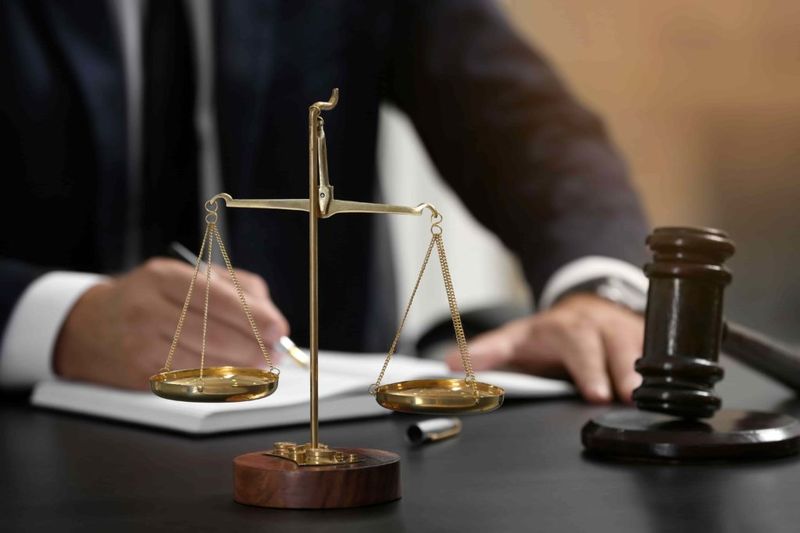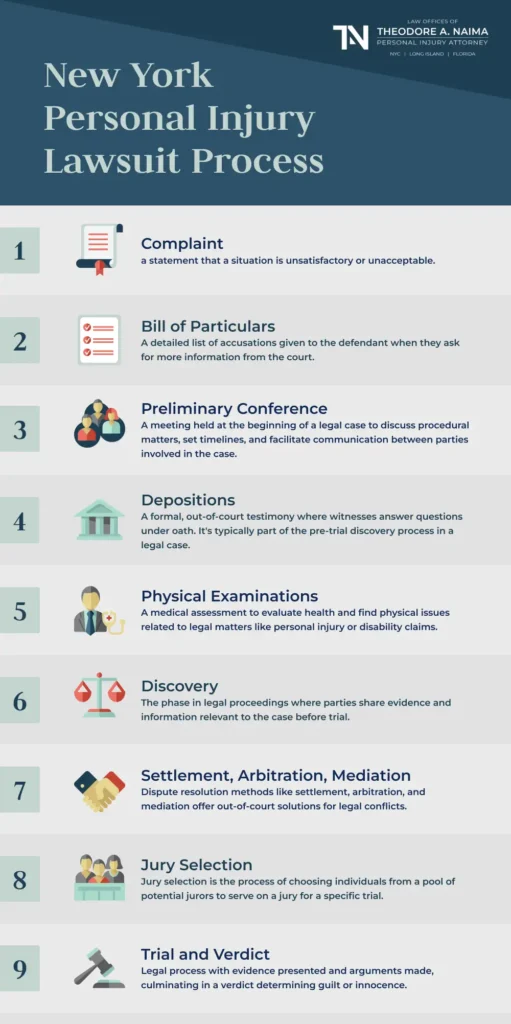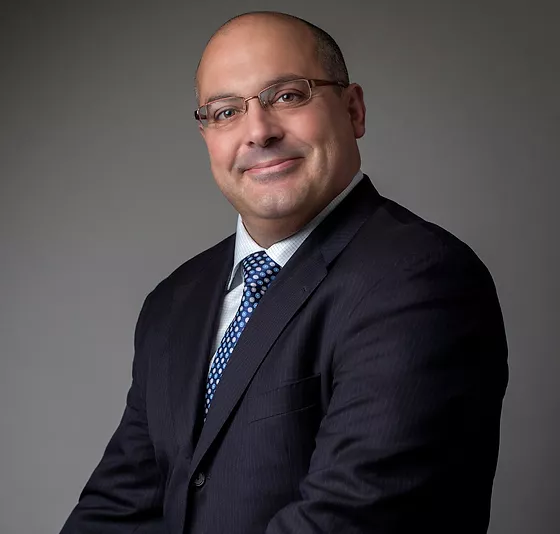
When you suffer injuries because of the actions or inaction of another individual, business, or entity, you should consult with an experienced New York personal injury attorney.
At the Law Offices of Theodore A. Naima, we have extensive experience successfully representing accident victims in their claims for damages.
Contact Theodore A. Naima to learn about the personal injury lawsuit process and discuss your rights and remedies.
What Is the Personal Injury Lawsuit Process?
The facts and circumstances of every personal injury lawsuit are unique to the incident. However, filing a personal injury claim follows the same general roadmap.

1. Complaint
Your lawsuit begins with a “Summons and Complaint.” The complaint is a legal document that outlines the nature of the accident victim’s claim.
In most cases, the at-fault party (defendant) will have 30 days to serve an “answer” or response to the complaint.
2. Bill of Particulars
A Demand for a Bill of Particulars is a list of written questions from one party to another asking for details about a claim or defense. What a party can demand in a Bill of Particulars is fact-specific.
However, CPLR 3043(a) lays out a specific list of items a party can request. Parties to a personal injury case might need to respond to questions such as the following:
- The date, location, and approximate time of day of the occurrence;
- General statement of the acts or omissions constituting the negligence claimed;
- Whether actual or constructive notice is claimed;
- Statement of the injuries and description of those claimed to be permanent,
- Length of time confined to your bed or house;
- Length of time you are incapacitated and can’t work; and
- Total amounts claimed as special damages for physicians’ services and medical supplies.
New York maintains a set of procedural regulations governing these inquiries.
3. Preliminary Conference
A preliminary conference is a crucial step in New York personal injury claims. At this stage, the parties agree to a timeline to exchange information, and the judge signs an order to the agreed-upon timetable.
4. Depositions
The “Examination Before Trial” (EBT) or depositions involve an oral examination by the opposing party’s attorneys.
Although depositions are typically taken outside a court setting, the parties will still be placed under oath, and a court reporter will transcribe the interview.
You must attend the EBT, or the court may dismiss your case.
5. Physical Examinations
In some cases, the defendant might request that you submit to a physical examination by a doctor of their choosing.
If you do not attend the scheduled examination, the court may dismiss your case and require you to pay for the missed exam.
6. Discovery
Discovery and inspection refers to exchanging information, evidence, and documents between the parties.
These items would be in addition to the items you requested in your Bill of Particulars and other records disclosed at your physical exam or EBT.
7. Settlement, Arbitration, Mediation
The parties may engage in settlement negotiations to attempt to settle the case before the need for trial arises.
Although settlement negotiations can occur anytime during the lawsuit, this usually happens after discovery.
If the case settles, it resolves, and there is no need for trial. If the parties cannot come to a compromise, the case will proceed to trial.
8. Jury Selection
Jury selection is the first thing that occurs after a case is called for trial. The parties’ attorneys will engage in jury selection, picking six jurors and two alternates.
9. Trial and Verdict
New York City courts typically try personal injury cases in two parts. This is called a bifurcated trial.
In the first part, the parties present their evidence, and the judge or jury determines whether the defendant caused your injuries.
The case will proceed to the second part if the defendant is found liable. Here, you will present evidence of your injuries and damages to the jury.
The jury will then award compensation based on the evidence you present.
The information provided on this page speaks in general terms. Of course, there are often exceptions that apply in certain situations.
For a complete list of all exceptions, please consult the Consolidated Laws of New York.
Attorney Naima is also happy to answer any questions about your injuries or ability to pursue a claim against the responsible party.
Learn More About the Personal Injury Lawsuit Process by Scheduling a Free Consultation with a NY Personal Injury Attorney
You should learn about the personal injury process if you were injured in a car accident, slip and fall, construction accident, or due to negligent medical care.
At the Law Offices of Theodore A. Naima, our New York personal injury lawyer has over 25 years of experience helping accident victims recover full and fair compensation for what they’ve been through.
We offer free consultations, during which we will answer your questions, provide you with an overview of the recovery process, and explain how we can help connect you to the compensation you deserve.
To learn more, give the Law Offices of Theodore A. Naima a call at 516-280-7311, or connect with us through our online contact form.




